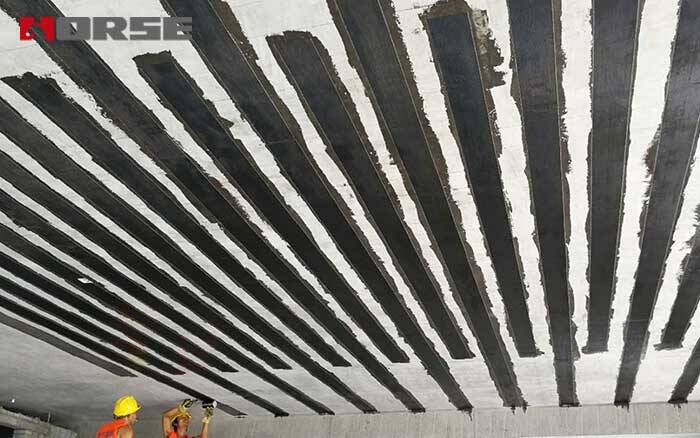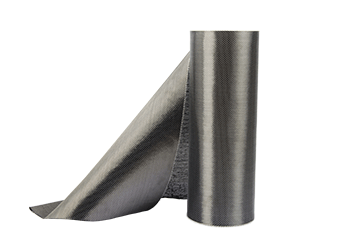Solutions
Horse Construction offers full range of structural strengthening materials with technical supports, documentation supports, products supports, project supports.
Carbon fiber reinforcement technology is a new structure reinforcement technology emerging in civil engineering in recent years. Because of its advantages such as low density, high strength, corrosion resistance, and simple construction operation, it has been widely used as soon as it appears.

Carbon fiber reinforcement technology is a new structure reinforcement technology emerging in civil engineering in recent years. Because of its advantages such as low density, high strength, corrosion resistance, and simple construction operation, it has been widely used as soon as it appears.
The carbon fiber composite material reinforcement method is to use epoxy resin to directly bond the carbon fiber cloth to the weak part of the reinforced concrete structure, and form a whole with the reinforced object, and jointly increase the load capacity of the section.
I. Analysis of the reinforcement effect of direct bonding carbon fibe
1. Bonding carbon fiber composite materials to reinforce concrete bending members has limited effect on improving the bending and shear capacity of the beam. In principle, the direct bonding of carbon fiber materials belongs to the category of passive reinforcement. The strain stress of carbon fiber materials is relatively lagging, and the degree of stress (tensile strength) of carbon fibers depends on the deformation of the reinforced bending member.
2. Pasting carbon fiber materials can restrict the development of cracks and indirectly improve the crack resistance of the structure.
In addition, because the use of carbon fiber reinforcement requires the use of supporting epoxy structural adhesive, epoxy structural adhesive is painted on the surface of the reinforced concrete members, forming an adhesive layer on the surface, so the resistance of concrete can be indirectly improved. Corrosive and carbonizing ability. Therefore, it also has a certain promotion effect on the durability reinforcement with the main purpose of extending the service life of the structure.
II, the analysis of the reinforcement effect of carbon fiber material
Generally speaking, the method of reinforcement by winding and pasting carbon fiber material (circle beam method) is generally used in axially-compressed members. In principle, when using the beam method to reinforce the ring beam, it has a significant constraint on the reinforced members. Under the action of axial pressure, the concrete member is in a three-way compression state, which can greatly increase the compressive bearing capacity of the concrete, enhance the ductility of the structure, and significantly improve the seismic performance of the structure.
It should be noted that when the ring beam method is used to strengthen the members in normal cross-section or to improve the ductility of the seismic reinforcement, the number of layers of carbon fiber materials is different for different types of sections. For circular cross-sections, no less than two layers of carbon fiber material should be pasted, and for rectangular cross-sections, there should be no less than three layers. And the overlap width between the upper and lower layers of the bundle should not be less than 50mm, the extension length of the carbon fiber material to the interception point should not be less than 200mm, and the overlap positions of the strips should be staggered from each other.
In general, the emergence of carbon fiber composite materials has greatly promoted the progress of China's structural reinforcement technology. But how to use it reasonably is a question worth pondering. We can only achieve the purpose of strengthening concrete members by applying carbon fiber composite materials while clearly understanding the strengthening mechanism.
You can find anything here you are in need of, have a trust trying on these products, you will find the big difference after that.

High strength, unidirectional carbon fiber wrap pre-saturated to form a carbon fiber reinforced polymer (CFRP) wrap used to strengthen structural concrete elements.

High strength, unidirectional carbon fiber fabric pre-saturated to form a carbon fiber reinforced polymer (CFRP) fabric used to strengthen structural concrete elements.

High strength, unidirectional carbon fiber sheet pre-saturated to form a carbon fiber reinforced polymer (CFRP) sheet used to strengthen structural concrete elements.